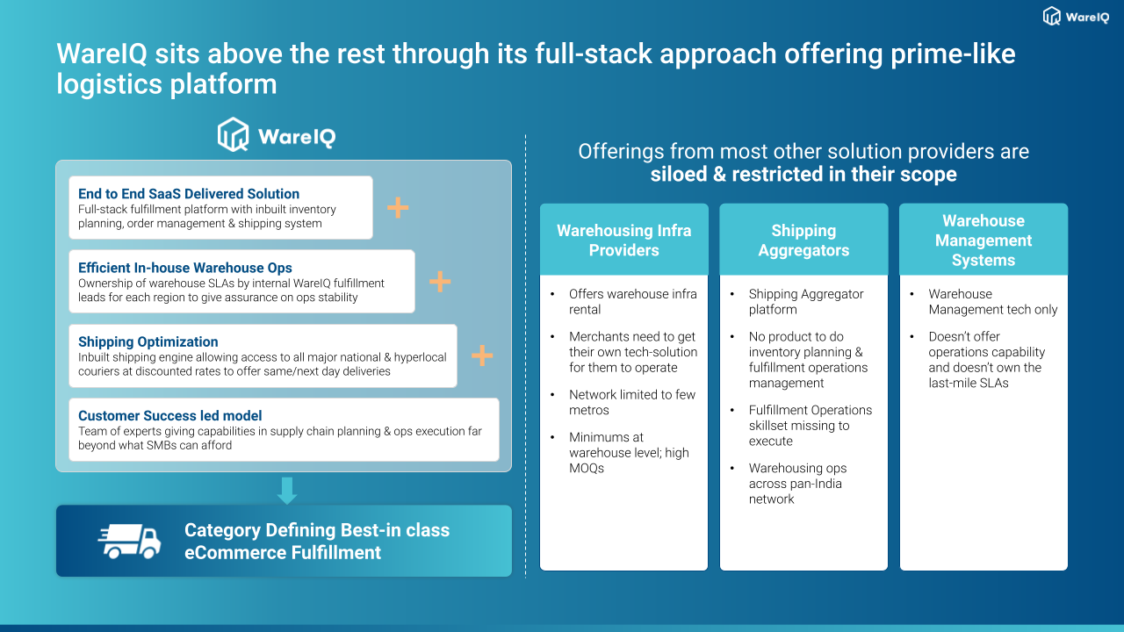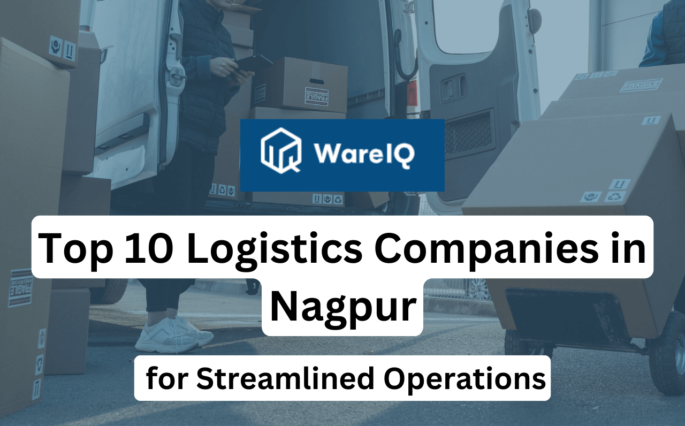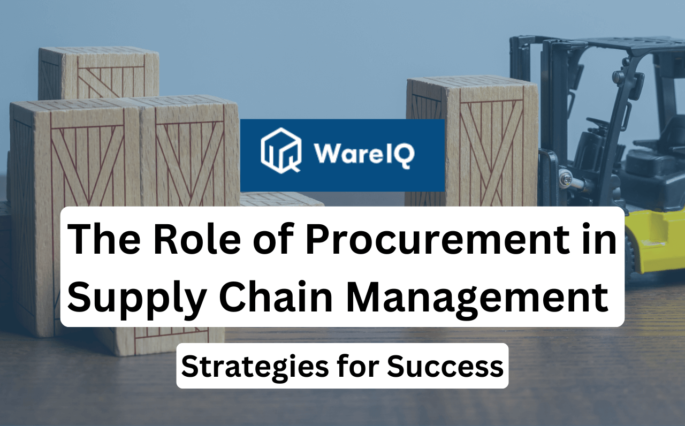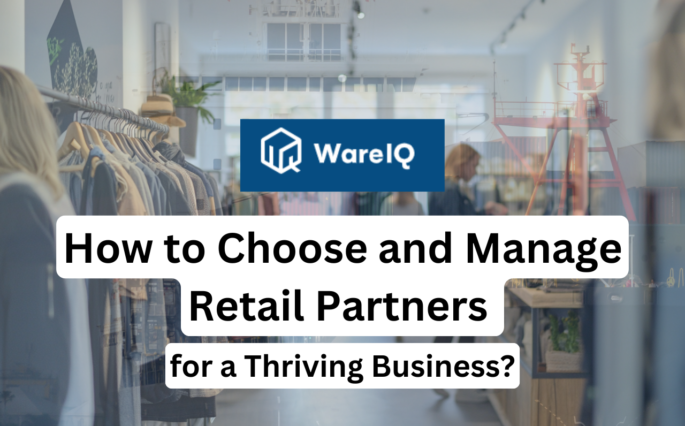Dropshipping vs 3PL: What is Right for Your Business in 2024?

As a business owner, it takes a lot more than having the right products and a seamless ordering experience to be successful. The real task begins when the customer makes a purchase. How will the order fulfillment be carried out? In the interest of answering this question, we delve deeper into the top differences between dropshipping vs 3PL fulfillment, in 2024.
To make sure that the brand’s visibility increases, revenues get generated and more sales take place, SMEs and startups need to ensure that they make the right choice between dropshipping and 3PL fulfillment, for their requirements and ensure that customers experience a quick and smooth delivery process. To make that magic happen, it’s important to have a strategy and process in place for order fulfillment.
- What is Dropshipping Fulfillment and How Does It Work?
- What is 3PL Fulfillment?
- Dropshipping vs 3PL Fulfillment: Why are These Models Important?
- Dropshipping vs 3PL Fulfillment: Top Differences
- Dropshipping vs 3PL Fulfillment: Benefits Compared
- Dropshipping vs 3PL Fulfillment: What is Right for Your Business in 2024?
- Why is WareIQ the Best 3PL Partner in India for eCommerce Sellers?
- Dropshipping vs 3PL FAQs (Frequently Asked Questions)
What is Dropshipping Fulfillment and How Does It Work?
Dropshipping, also known as consumer direct fulfillment, is a business strategy in which online retailers collaborate with manufacturers or suppliers to distribute products directly to customers (also known as dropshipping products). An eCommerce merchant does not purchase or store an inventory of the products for sale in this arrangement. They offer it on their websites and get it delivered directly to the buyer from their supplier or manufacturing network.
The Dropshipping Fulfillment Process
- eCommerce sellers add products to their online stores
- Customer orders a product from the online platform of choice where the store is located
- The customer is invoiced for the product and an additional shipping fee
- The seller now replicates the order with the manufacturer or supplier network
- The supplier/manufacturer packages the order and ships it directly to the customer
While the seller is responsible for product marketing and customer service, the inventory management, warehouse management, and eCommerce logistics are handled by the manufacturer or wholesale supplier. Dropshipping fulfillment allows retailers and distributors to extend their product offerings without having to increase the amount of inventory they keep on hand.
WareIQ, an eCommerce fulfillment company, empowers online brands with a superior-tech platform to compete with Amazon like service levels by bringing their average delivery timelines from 5-10 days to 1-2 days.
Common Misconceptions about Dropshipping Fulfillment
Dropshipping is an order fulfillment model that has gained popularity over the years and has a successful business model. But it is a bit different from order fulfillment & there are some common misconceptions about this fulfillment method that causes sellers to shy away from leveraging it and utilising it to the fullest potential. Some of the common misconceptions of dropshipping are:
1. Dropshipping fulfillment is quick and easy to start
No. Dropshipping as a fulfillment model is smart and simple, but it requires a lot of research and networking to enter the competitive market and thrive. Entering the eCommerce business, especially as a new player, requires patience, research, planning, and continuous improvement to stay relevant in the market and earn profits. Before stepping into the dropshipping business, sellers need to:
- Pick a niche.
- Investigate the products of competitors.
- Look for reliable dropshipping companies and build a network.
- Create an online store and get onto eCommerce platforms like Amazon.
- Promote the business.
- Analyze and improve the store’s performance.
2. Dropshipping fulfillment does not have any upfront costs
- To have a successful dropshipping business, it is important to have a great online store and a good online marketing strategy. While the investment may seem lower than setting up a store that requires inventory and storage, there are still significant costs involved to get business visibility and attract customers.
- Purchasing a domain and setting up the online store with attractive product pages, browser and device compatibility, responsiveness and live chat support are all key elements to building the brand and improving customer experience.
- Apart from this, advertising efforts on social media platforms and having good SEO content marketing are also regular expenses that businesses need to account for.
- Dropshipping fulfillment is only suitable for small-scale businesses.
This is not true. Businesses of any scale can follow a dropshipping fulfillment model. SMEs and startups can easily scale their business and have a more streamlined order fulfillment process with dropshipping, but will need a bit more capital to purchase the right products from the supplier network inventory
3. Dropshipping businesses need to be located in the same location as their suppliers
- No. While many think that the business needs to be located in the same country as their suppliers, dropshipping can be completed from any part of the world. This is an order fulfillment method where global retailers can have an extensive supplier network and serve global customers from any corner of the world. The key here is visibility to the customers and having a reliable manufacturer and supplier network that can fulfill orders efficiently.
- Dropshipping is a great way for quick and easy sales and profits
The eCommerce space is a highly competitive one, especially with all of the digitization taking place. Finding a niche and building a supplier network takes time and effort and business owners need to go through a lot of trial and error to find the right products for the target audience. Research and quality checks are also needed before products are listed in the store and it is important to make sure that there are no fallouts or delayed delivery times.
What is 3PL Fulfillment?
3PL Fulfillment companies handle inventories, process orders, and ship items on behalf of other businesses. Business owners can partner with 3PL fulfillment companies to store, package, and ship their products to customers. Outsourcing fulfillment services to a third-party fulfillment logistics company, such as inventory management, monitoring SKU sales performance, forecasting customer demand, packaging and shipping orders, and so on, allows businesses to concentrate on product manufacturing, quality assurance, and customer satisfaction.
3PL Fulfillment Process
- Businesses manufacture the products or source them from their supplier network
- Products are sent to the order fulfillment center for storage
- Customers place an order from an online store or preferred platform
- Customers are invoiced and order details are shared with the 3PL partner
- The fulfillment partner processes the order, packages it, and ships it directly to the customer
Pros and Cons of 3PL Fulfillment
Order fulfillment setbacks for startups and SMEs can harm their business and operational efficiency. As the company grows and attracts customers from all around the world, creating an order fulfillment system in-house gets more difficult. Customer satisfaction and revenues can suffer if the order fulfillment process is inefficient. As a result, the company’s reputation is also affected. A third-party order fulfillment partner can assist with inventory management and the end-to-end process of delivering the order to the customer.
Pros of 3PL Fulfillment
- Experts and experienced partners take care of the heavy lifting of order fulfillment.
- Simplified logistics help business owners concentrate on creating more impactful business outcomes.
- Scalability and flexible service options to help manage the business and better maintain customer satisfaction.
- Less expensive shipping with the ability of 3PL partners to manage labour and transportation.
- Faster delivery to improve customer satisfaction and generate recurring sales.
- Inventory is stored and managed at fulfillment centers, freeing up the need for additional storage space and inventory management in-house.
- Greater connectivity with fulfillment centers being available in multiple locations. This helps improve efficiency, and costs and provides quicker order delivery.
Cons of 3PL Fulfillment
- Inventory is limited to what the business owns. This means monitoring the stock levels, analysing trends, and restocking inventory to avoid shortage.
- Inventory delivery is the business’s responsibility. Third-party logistics partners will not be responsible for replenishing stocks without the business owner having them ready to be inventoried at the fulfillment center.
- Requires upfront investment to pay for the 3PL services like eCommerce warehousing and 3PL distribution.
- Bad service from the 3PL partner can affect brand reputation. Not providing a good tracking and delivery experience to the customer can impact sales and customer loyalty.
Dropshipping vs 3PL Fulfillment: Why are These Models Important?
The dynamics of customer order fulfillment have changed. The days of shopping in stores are long gone. The majority of orders are now placed online. As a result, businesses have had to alter their order management procedures. While some fulfill orders from their stores, offer in-store pickup, or have suppliers ship directly to the consumer, others continue to fulfill orders through their distribution centers (DCs).
It is critical to use the correct order fulfillment strategy to boost sales, maintain a positive brand image, and cultivate a loyal client base.
Dropshipping vs 3PL Fulfillment: Top Differences
| Dropshipping Fulfillment | 3PL Fulfillment | |
|---|---|---|
| Inventory | Inventory is owned, held, and shipped by the supplier. | The business owner is in charge of inventory, while the 3PL fulfillment partner is in charge of management and logistics. |
| Fulfillment Services | Dropshipping fulfillment partners are the original manufacturers or wholesalers of the products they offer. | The third party fulfillment partners give infrastructure and logistics help to business owners. |
| Upfront Capital | Starting a dropshipping business, which is mostly focused on promotion and online shop administration, requires very little initial capital. | To launch a business that would benefit from order fulfillment services, business owners need a significant amount of capital to collaborate with a 3PL fulfillment company. |
Dropshipping vs 3PL Fulfillment: Benefits Compared
The main advantage of third party fulfillment is that it saves the business a significant amount of time. By outsourcing the order fulfillment process, business owners can invest time in critical business operations like marketing, sales, product design, and so on. Furthermore, businesses can scale by integrating third-party order fulfillment services with platforms such as Shopify, Meesho, Amazon, Flipkart and more. This in turn reduces the order fulfillment time as the eCommerce logistics partner detects and processes new incoming orders.
Dropshipping fulfillment allows entrepreneurs to start a business quickly and easily. Since the cost for inventory or storage is limited, the investment required can be focused on improving brand visibility and customer attraction. Dropshipping also provides access to a diverse choice of products as business owners research and build their vendor and supplier network.
Dropshipping vs 3PL Fulfillment: What is Right for Your Business in 2024?
The costs of dropshipping fulfillment are low enough for startups and SMEs to begin their eCommerce journey. This can play an important factor when businesses lack the infrastructure for storage and shipment.
Dropshipping is a great order fulfillment option for new businesses that
- Have limited financial resources.
- The desire to try out new products, markets, or marketing tactics.
- Do not want to invest in their own warehouse space or employees.
For eCommerce stores that sell their own unique products, third party fulfillment is ideal. As long as product customisations are not needed for each consumer, all the business needs to do is send batches to the logistics partner, who will take care of the inventory management, packing, shipping, and delivery.
3PL fulfillment is a great option for businesses that
- are scaling up and have large daily order volumes.
- don’t have the labour or resources to finish the order fulfillment process in-house.
- have the sufficient upfront capital to partner with a 3PL provider
In most cases, the benefits of 3PL logistics outweigh the cons.
Why is WareIQ the Best 3PL Partner in India for eCommerce Sellers?
When evaluating order fulfillment approaches, cost, quality, and control should all be considered. The good news is that changing the fulfillment process to meet business requirements is simple for startups and SMEs. Businesses can choose a procedure they trust and work towards developing their brand and consumer base after careful deliberation and assessing the advantages and downsides. After going through the entire article, you would have understood the benefits of outsourcing your fulfillment needs to a 3PL partner over dropshipping. WareIQ with its full-stack eCommerce fulfillment solution can not only help you with the last-mile delivery requirements but also with the entire end-to-end business operations.
Established in 2019, WareIQ, a Y-combinator backed startup, has rapidly grown to be the leading provider of full-stack eCommerce fulfillment services in India for some of the most reputed brands. WareIQ offers a full-stack platform for eCommerce companies to enable same-day delivery and next day delivery to customers – an Amazon Prime-like experience but accessible to everyone.
WareIQ has empowered brands to sell more, sell faster & sell everywhere due to:
- Access to WareIQ’s strong nationwide network of fulfillment centers, micro fulfillment centers & urban dark stores near their customers
- Access to all major national & hyperlocal last-mile couriers at discounted rates for making same/next day deliveries possible
- Easy integration across multiple online platforms & marketplaces
- Horizontal marketplaces: Flipkart, Amazon, etc.
- Vertical marketplaces: Nykaa, Myntra, etc.
- D2C platforms: Shopify, Magento, WooCommerce, etc.
- Social commerce platforms: Bikayi
- Access to a superior centralised tech platform for eCommerce operations
- ML-based prediction engine for efficient warehouse network design & smart inventory placement
- Centralised platform for core fulfillment & shipping operations
- Post-shipping apps for delightful experience & zero to minimum supply chain leakages (Branded tracking page with smart marketing placements; Trigger-based updates & smart communication platform)
WareIQ has customised offerings for merchants experiencing different order volumes as well as having different delivery speed expectations. WareIQ is probably one of the very few fulfillment tech companies in the world that have same-day delivery offerings for their customers under their product “WareIQ RUSH”.
With world-class WMS functionalities, WareIQ handles the entire range of intricate operations in the eCommerce fulfillment process, ranging from Inbound Operations such as scanning and quality check, through 100% accurate Pick and Pack, to Inventory Management across all channels. WareIQ’s next day delivery and same day delivery service are helping eCommerce businesses set new standards with respect to setting customer expectations and fulfilling them with high efficacy. At the same time, WareIQ customers realise significant cost savings and wider reach due to better negotiations with shipping partners, strategically placed warehouses, economies of scale and scope in warehousing, and data-driven decision-making.

WareIQ’s WMS, a centralised tech platform helps to better manage undelivered orders by reducing NDR processing time by 12 hours – a multifunctional NDR dashboard helps to track and take immediate action for undelivered orders in real-time, thereby reducing RTO by up to 10%. Automatic replenishment recommendations and easy purchase order creation capabilities on the WareIQ platform further empower eCommerce companies to leverage all possible ways of increasing their ROI.
- Pan India Fulfillment & Darkstore Network: Plug-and-play fulfillment infrastructure with no minimums, which is compliant with Amazon Seller Flex, Flipkart Assured, Myntra and other marketplaces
- Inventory & Network Planning Excellence: Best-in-class AI models for sales forecasting, product segmentation, and inventory management to reduce inventory by 40% and increase revenue by 10%.
- Vertically Integrated Fulfillment Tech Stack: Our Fulfillment Tech Solution supports integrations with 20+ top marketplaces & D2C platforms, and prominent national, regional and hyperlocal couriers, enhancing reach by covering deliveries for 27,000+ pin codes
- Supply Chain Productivity Applications: Integrate a host of supply chain productivity apps with a single-click to your existing CRMs, ERPs & accounting software to manage your logistics workflows from one command center. Use Apps like RTO Shield to get 100% RTO protection, Branded Tracking to turn your order tracking page into a profitable marketing channel, and many more.
Trusted by 300+ top Indian brands, we are helping them accelerate online sales and expedite their growth through a synergistic combination of advanced technology, robust fulfillment infrastructure & seller enablement services!WareIQ is backed by leading global investors including Y Combinator, Funders Club, Flexport, Pioneer Fund, Soma Capital, and Emles Venture Partner.








